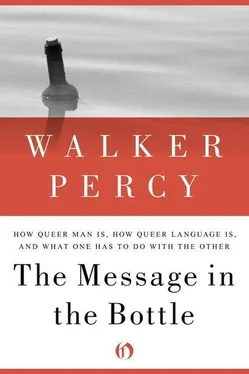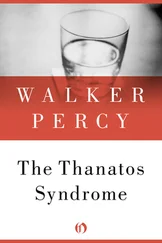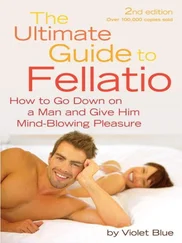The Antinomy of Myth
Examples of mythic assertions, S is P.
Marduk split Tiamat like a shellfish with two parts
Half of her he set up and ceiled it as the sky.
(Enuma Elis)
The Brahmin was his [the world’s] mouth, his arms were made the Rajanya [warrior], his two thighs the Vaisya [trader and agriculturalist], from his feet the Sudra [servile class] was born.
(Rg Veda)
Maui, our ancestor, trapped the wandering sun and made it follow a regular course.
(Maori myth)
(1) What the scientist thinks of the assertion S is P when the assertion is proposed to him as a true-or-false claim:
The myth, S is P, is false. To say that the world was made by the Babylonian city-god Marduk from the body of Tiamat is absurd. There is not a shred of evidence to support such an assertion, and there is a great deal of evidence to the contrary.
(2) What the scientist thinks of the assertion S is P when the assertion is itself a phenomenon under investigation by the scientific method, to be ordered with other phenomena in the general corpus of scientific knowledge:
A myth believed is true (Schelling). All societies have their myths; myths are therefore necessary for the function of a society (Malinowski, Mclver). Myth serves the function of seeing man through periods of peril and crisis (James, Malinowski). One of the troubles with modern society is the mythic impoverishment of the man of facts due to his rejection of old beliefs and the loss of archetypes. The answer is a “new mythology” (Langer). Recovery of mythic archetypes is necessary for mental health (Jung).
When myth is studied as an empirical phenomenon, it is evaluated not according as it is true or false or nonsensical but according to the degree to which it serves a social or cultural function. Thus a “genuine” culture (and a genuine myth) is a culture which is viable, satisfying the spiritual and emotional needs of the culture member; a “spurious” culture fails to do so (Sapir). It is a mistake to use rigid scientific standards and say that a myth is false; a myth may be poetically and symbolically “true” according as it satisfies the symbolic needs of world envisagement (Langer, Cassirer).
(3) Comment. The antinomy is manifest in the very usage of the word myth by modern ethnologists. As Bidney has pointed out, it is, to begin with, a value-charged term: myth means a belief which is not true. Then myth is used neutrally as a data-element along with other data-elements, canoes, baskets, dwellings. Bidney goes on to say, “The greatest myth of the twentieth century is the identification of all cultural ideology with myth in the name of social science.”
One serious consequence of this initial antinomy is a canceling of the social prescriptions of the scientist for the ills of the day. It becomes necessary for the scientist to recommend to culture or patient that which he, the scientist, has labeled false at the outset. But the fallacy of the prescription is that a myth can hardly be believed if it is believed to be false. The motto of the scientist when he is prescribing myth as a data-element necessary for mental and cultural health is: It may not be true but you had better believe it.
Another consequence is the compromise of the scientist’s own position in the face of the onslaught of the contemporary myths of fascism and Communism. If the scientist believes theoretically in the in dispensability of myth for an integrated culture, it becomes difficult for him to make a coherent objection to the Nazi or Soviet ethos. The upshot is the anomalous situation, so familiar in academic circles today, of the professor who in the field and classroom recognizes only functional relationships and refuses to recognize norms, and who in private and public life is a passionate defender of the freedom and rights and sacredness of the individual.
The source of the antinomy is the arbitrary decree of the scientist that only functional relationships shall be certified among his “data” and that even ideological beliefs and assertions shall be evaluated not according to the true-or-false claim of the assertion but according to its function in the culture. The decree requires that a belief be labeled as a myth and at the same time certified as valid as a cultural function. Only two kinds of judgments about beliefs are forthcoming: false in fact and bad in function (Sapir’s “spurious” myth), false in fact and good in function (Sapir’s “genuine” myth). Thus the old-style rationalist attitude toward religion is reversed. The eighteenth-century rationalist accepted the true-or-false claim of religious belief — and usually argued against it. The modern culturologist denies the claim and accepts only a functional criterion in judging its validity. Thus C. G. Jung “accepts” the Catholic dogma of the Assumption because it validates the anima archetype, while at the same time he denies its claim to literal truth. Jung’s approach, once the total competence of the functional method is accepted, seems reasonable. I am not interested in the truth or falsity of religion, says Jung, but only in the structure and function of the human psyche. Yet such a neutrality is warranted only if the neutrality is consistent. It is not consistent when ideological belief is assigned first to the category of myth, then made to do duty as a neutral term in an objective culturology.
The Antinomy of Language
Examples of the linguistic assertion S is P.
Dr. Itard writes in The Savage of Aveyron that he tried to teach Victor the wild boy the word for milk, lait, as a sign of a biological need, by withholding the milk and uttering the word in its absence. This failed: After the milk was given to Victor, however, and the word lait uttered by chance, to Dr. Itard’s astonishment, Victor understood at once that lait was the name of the milk.
What is this?
Milk.
What color is it?
White.
Did you drink some?
This morning I drank some milk.
tl ‘imshya ’isita ’itlma
(He invites people to a feast)
(A sentence in the Nootka language)
(1) What the scientist thinks of the assertion S is P when the assertion is proposed to him as a true-or-false-or-nonsense claim:
I receive your statement S is P as a true-or-false-or-nonsense claim. I shall accept it as more or less true or false or as nonsense according to my criteria of verification.
If you wish to call this white liquid milk, then I will agree to the semantic rule by which the symbol “milk” shall henceforth be applied to this white liquid.
If you say that milk is a liquid, or that milk is a gas, or that milk is upside down, I shall accept your statement as asserting a state of affairs which is open to verification and otherwise is nonsense.
(2) What the scientist thinks of the assertion S is P when the assertion is itself a phenomenon under investigation, to be ordered with other phenomena in the general corpus of scientific knowledge:
An interchange of language is not the uttering and receiving of sentences which assert or deny a state of affairs in the world; it is rather a space-time sequence of stimuli and responses which are meaningful only in the sociobiological sense of learned behavior. A language symbol and the understanding of it are not qualitatively different from the signal and response of animal behavior (Morris, Mead). “In its biophysical aspect language consists of sound-producing movements and of the resultant sound waves and of the vibration of the hearer’s eardrums. The biosocial aspect of language consists in the fact that the persons in a community have been trained to produce these sounds in certain situations and to respond to them by appropriate actions” (Bloomfield). Human meaning is a context of stimulus and response (Ogden and Richards). Only causal sequential relations between signs and organisms are real; denotative relationships are not real but semantical (Ogden and Richards, Chase). The relation of identification between word and thing, subject and predicate is “wrong” (Korzybski). Human meaning and mind itself is a product of responses and responses to responses (Mead). A symbol and the idea associated with it cannot possibly refer to a real state of affairs in the world; if it did, it could only be a copy; a realistic metaphysic must always end in skepticism (Cassirer).
Читать дальше












